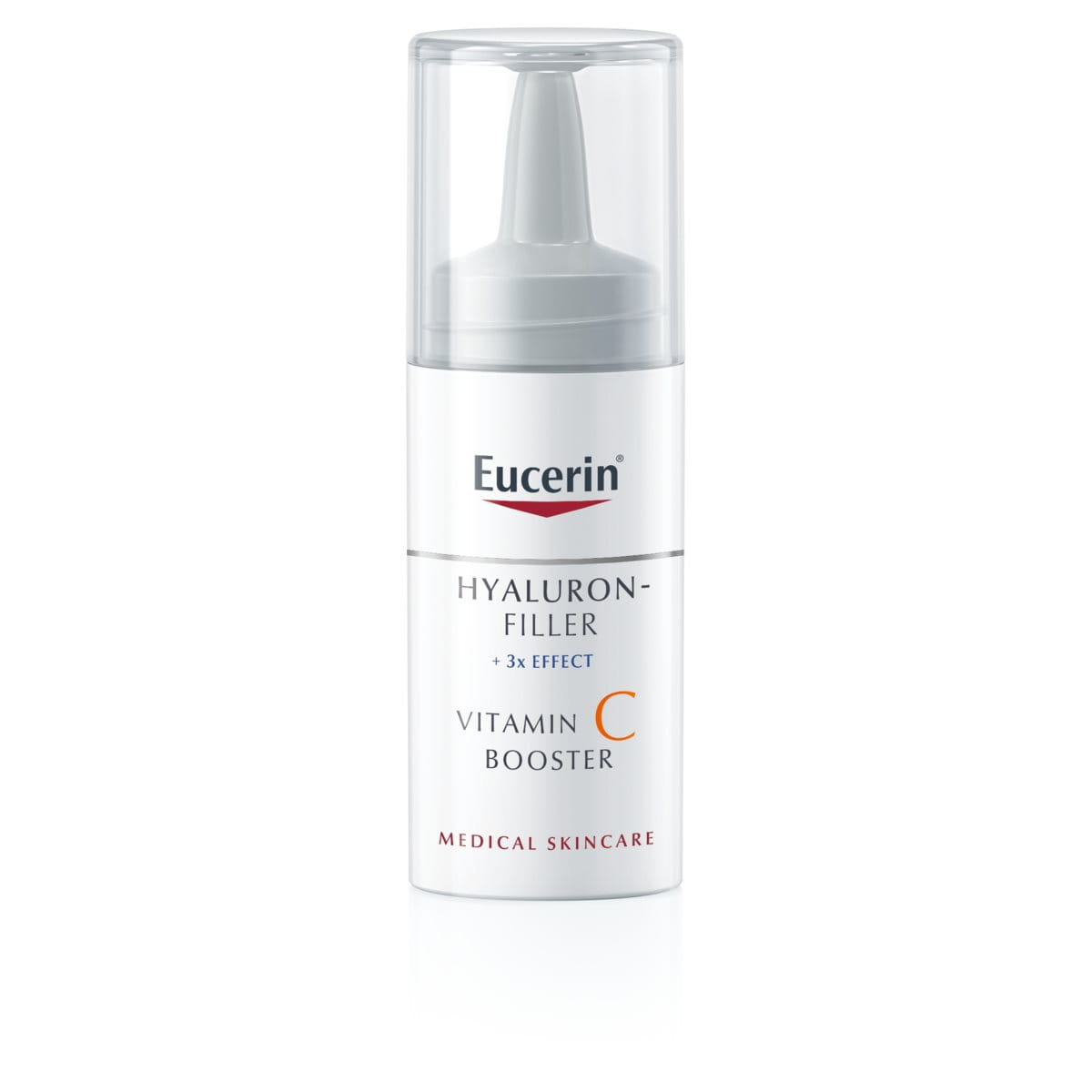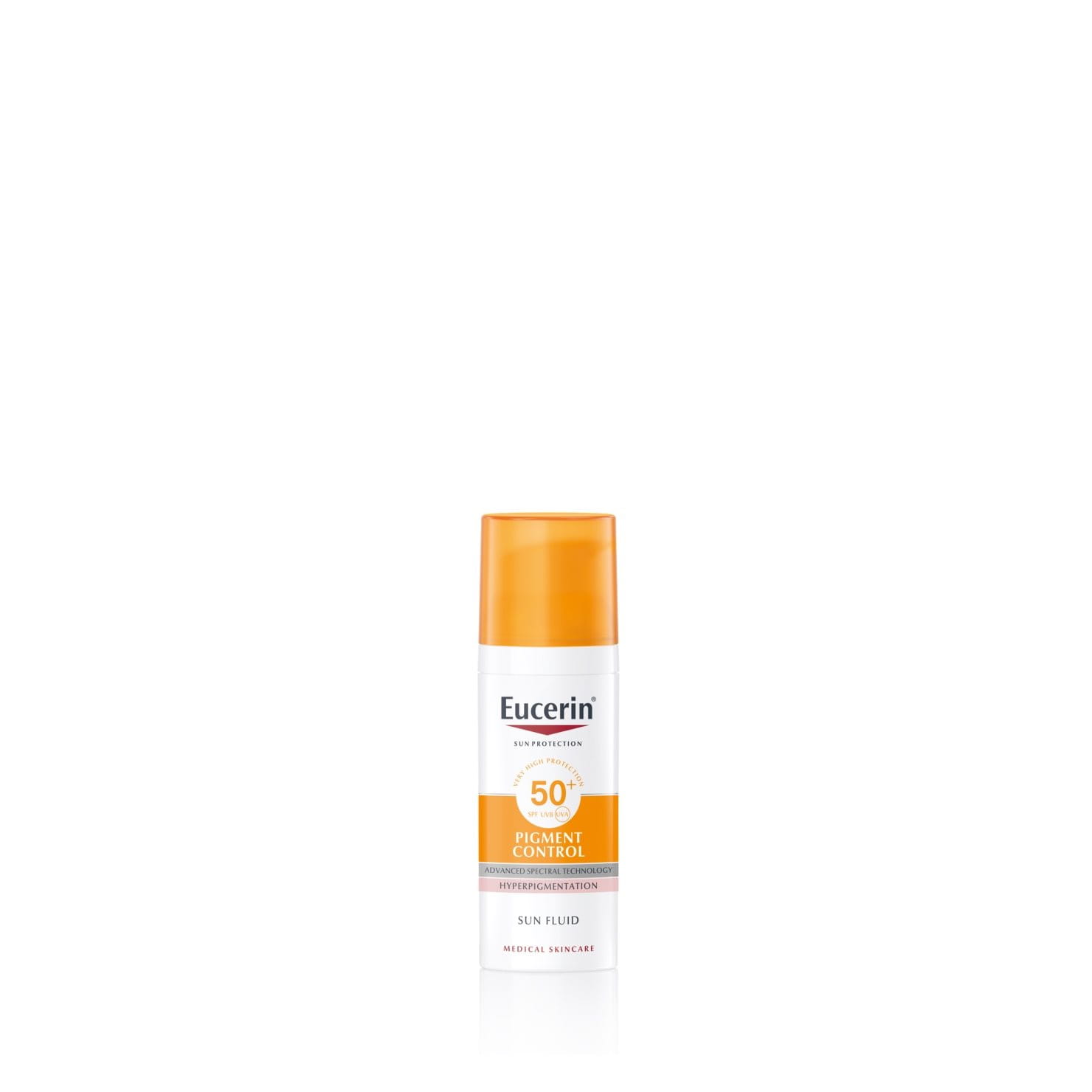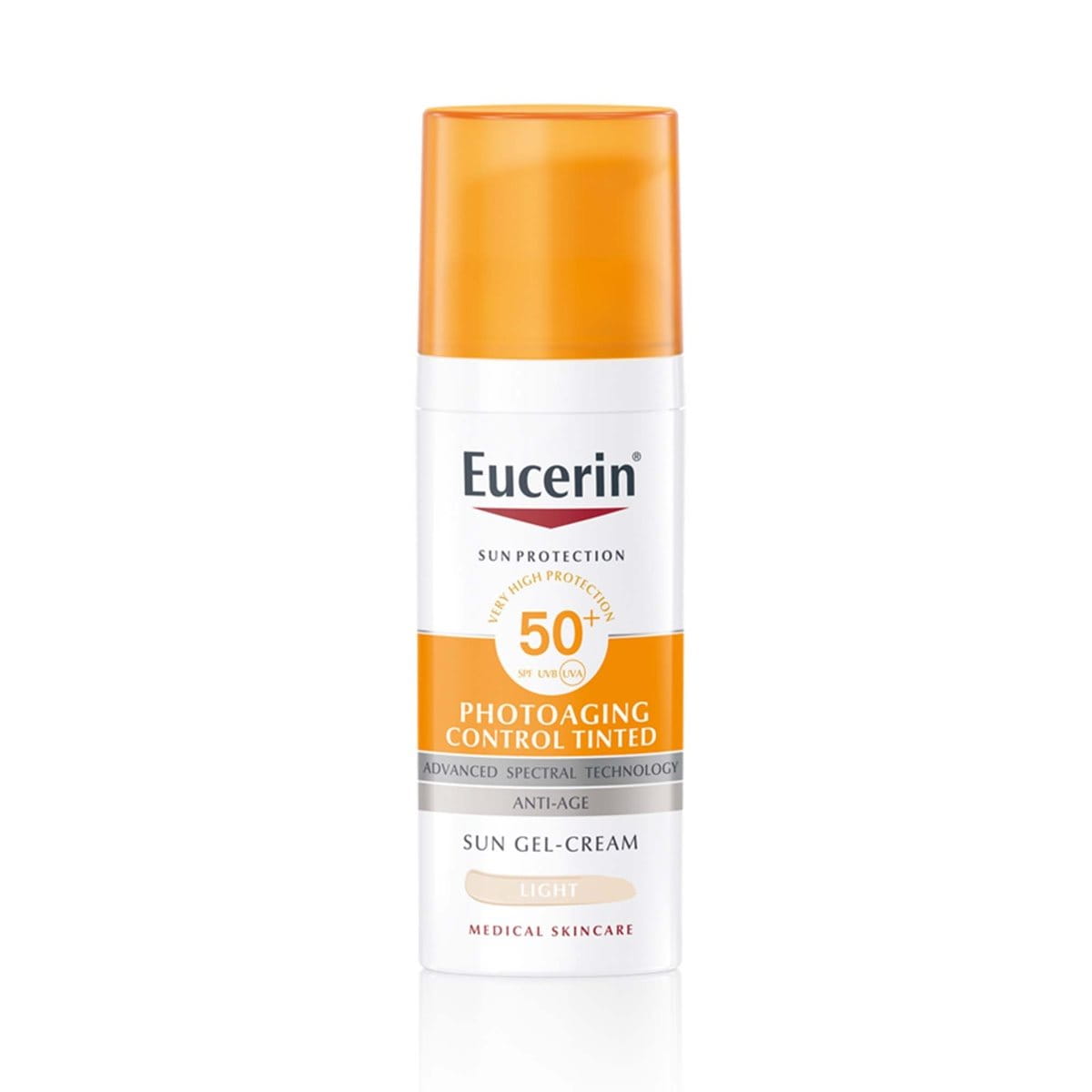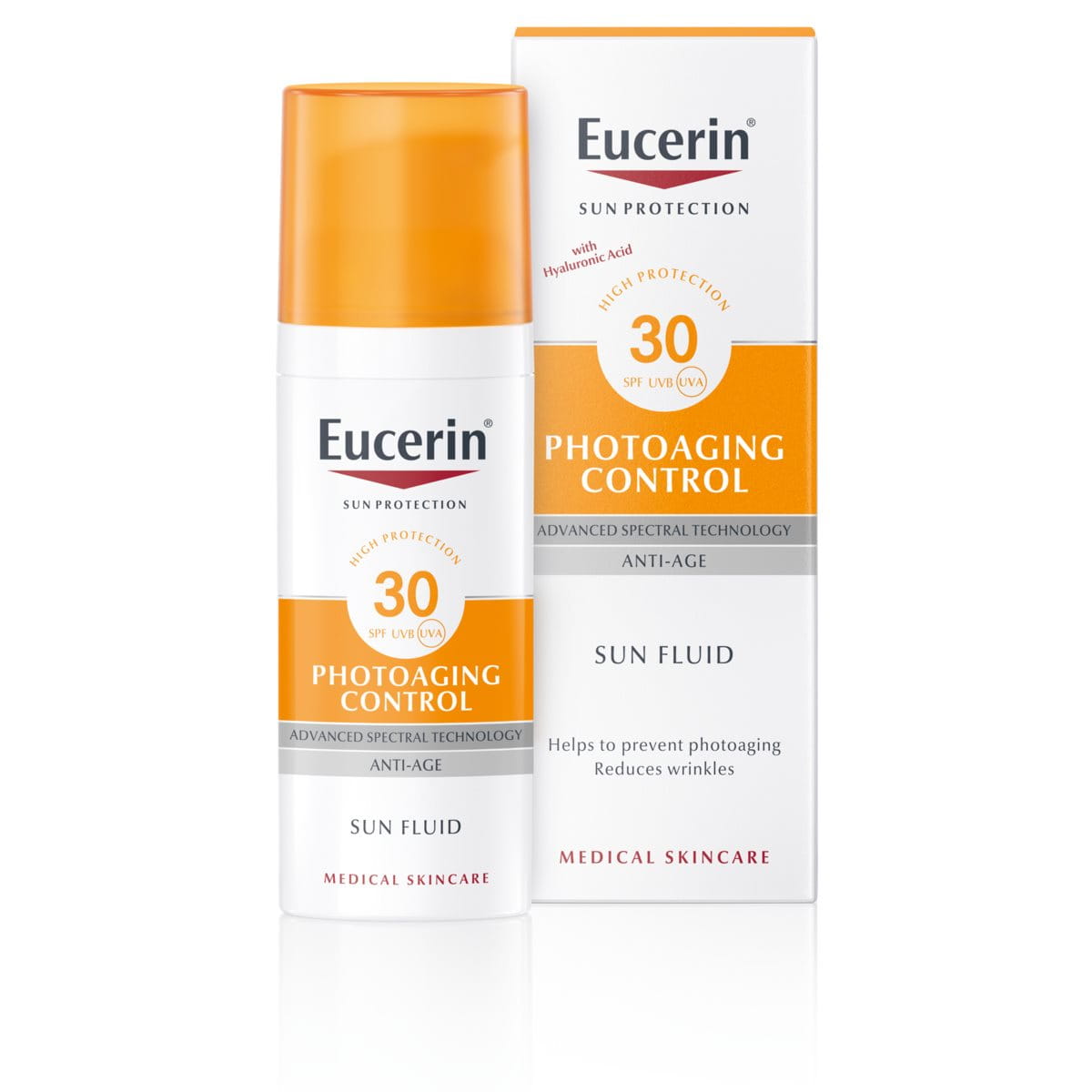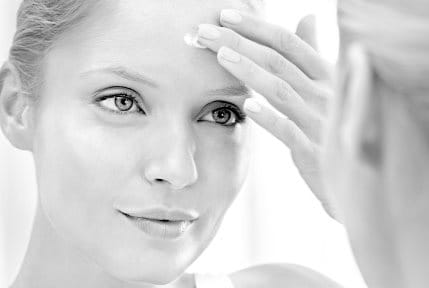Uneven skin pigmentation (or hyperpigmentation as it is often known) is a common skin complaint. Dark spots – known as age spots or sun spots – or dark patches of skin frequently appear on the face, hands and other parts of the body regularly exposed to the sun. This article outlines the different types of hyperpigmentation and explains what causes them. We look at how you can help prevent hyperpigmentation in the first place, as well as steps you can take to reduce dark spots or patches once they have formed.
What is hyperpigmentation and what are the different types?

Hyperpigmentation is the term used to describe areas on uneven pigmentation in skin.
Hyperpigmentation appears as darkened patches or spots on the skin that make skin look uneven. The spots are known as age spots or sun spots and hyperpigmentation is also at the heart of skin conditions such as melasma and post-inflammatory hyperpigmentation.
People with phototype 3 – 6 (Please refer to Fitzpatrick phototyping scale) are normally more affected by hyperpigmentation marks than those with phototype 1 & 2 as skin pigmentation is stronger in phototypes 3 - 6.
Hyperpigmentation: pigment spots such as age spots
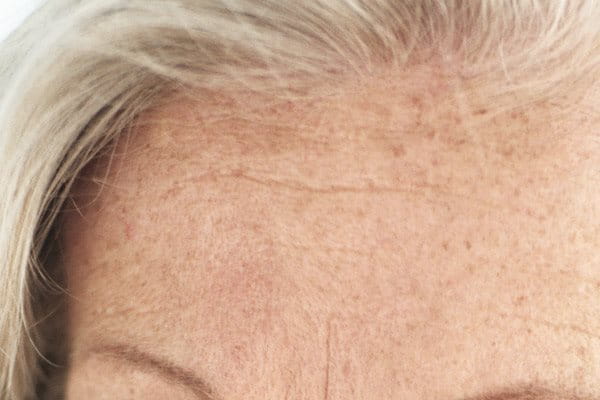
Pigment spots such as age spots (which are also known as sun spots) are caused by sun exposure. For this reason, they appear mainly on body parts that are frequently exposed such as the face, neck, décolleté, hands and arms. They tend to be small, darkened patches of skin. You can read more about what causes them and find out how to reduce them in What causes age spots and how can I reduce them?
Hyperpigmentation: melasma
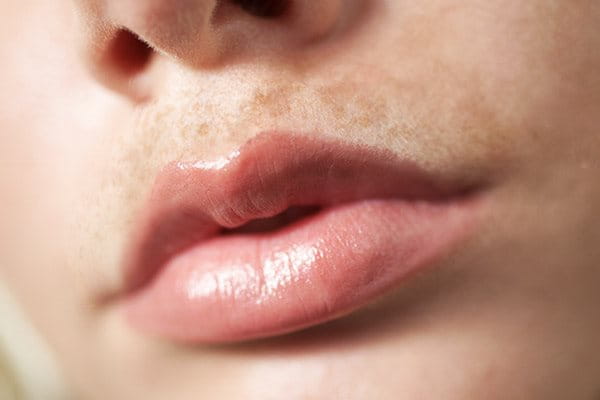

Also known as chloasma, melasma is a condition where larger patches of hyperpigmentation develop mainly on the face.
Although it can affect both men and women, melasma is most common in women and is thought to be triggered by changes in hormone levels. Melasma occurs in 10–15 percent of pregnant women and in 10–25 percent of women taking oral contraceptives 1 and is sometimes referred to as “the mask of pregnancy”. You can read more about melasma in What causes melasma and how can I reduce dark patches on my skin?
Hyperpigmentation: Post-inflammatory hyperpigmentation
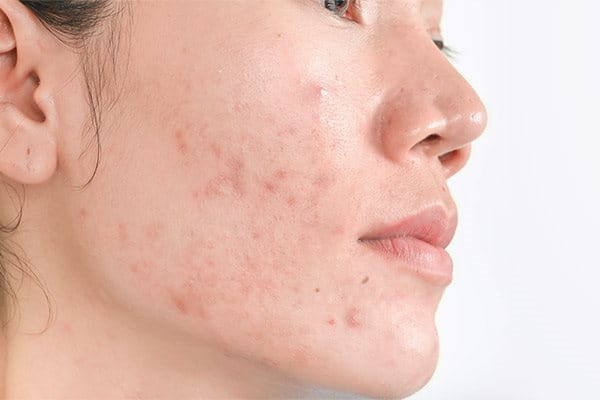
Post-inflammatory hyperpigmentation occurs when a skin injury or trauma heals and leaves a flat area of discolouration behind. It’s commonly found among acne sufferers and can also be caused by cosmetic procedures such as dermabrasion, laser treatment and chemical peels.
There are other factors that can cause patches of skin to become darker – such as scarring, birthmarks, solar or actinic keratoses and skin cancers – but these aren’t considered to be forms of hyperpigmentation.
Important Information
Consult your dermatologist or pharmacist if you’re concerned about any of your dark spot or if they start to bleed, itch, or change in size or color.
What causes and/or triggers hyperpigmentation?
Hyperpigmentation is caused by an increase in melanin. Melanin is the natural pigment that gives our skin, hair and eyes their color. A number of factors can trigger an increase in melanin production, but the main ones are sun exposure, hormonal influences, age and skin injuries or inflammation.
Sun exposure and hyperpigmentation

Sun exposure is the number one cause of hyperpigmentation as it’s sunlight that triggers the production of melanin in the first place. Melanin acts as your skin’s natural sunscreen by protecting you from harmful UV rays, which is why people tan in the sun. But excessive sun exposure can disrupt this process, leading to hyperpigmentation.
Once dark spots have developed, sun exposure can also exacerbate the issue by making age spots (or sun spots), melasma and post-inflammatory hyperpigmentation spots even darker.
Hyperpigmentation and hormones
Hormonal influences are the main cause of a particular kind of hyperpigmentation known as melasma or chloasma. It’s particularly common among women and is thought to occur when the female sex hormones estrogen and progesterone stimulate the overproduction of melanin when skin is exposed to the sun.
Hyperpigmentation can also be a side effect of certain hormone treatments.
Hyperpigmentation and age
As skin ages, the number of melanin-producing cells (known as melanocytes) decreases but the remaining ones increase in size and their distribution becomes more focused. These physiological changes explain the increase of age spots in those over 40. You can read more about how skin ages in skin aging.
Hyperpigmentation, skin injuries and inflammation
As its name suggests, post-inflammatory hyperpigmentation occurs following skin injury or inflammation such as: cuts, burns, chemical exposure, acne, Atopic Dermatitis or Psoriasis. Skin is left darkened and discoloured after the wound has healed.
Hyperpigmentation, disease and medication

Hyperpigmentation is also symptomatic of certain illnesses such as some autoimmune and gastrointestinal diseases, metabolic disorders and vitamin deficiencies.
It can also be triggered by certain medications such as chemotherapy drugs, antibiotics, antimalarials and anti-seizure drugs.
How can I prevent the formation of hyperpigmentation?
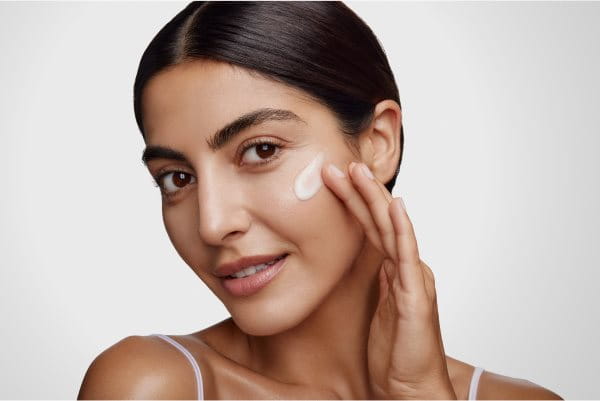
Sun protection is the most significant step you can take in helping to prevent hyperpigmentation in the first place. It’s important to remember that the sun’s rays affect skin even on cloudy days, so give your skin the daily protection it needs. As well as reducing hyperpigmentation, Eucerin Anti-Pigment Day SPF 30 and Anti-Pigment Day SPF30 Tinted in Light and Medium offer effective UVA and UVB (SPF 30) protection and prevent the formation of additional sun-induced pigment spots. Used in combination with the Dual Serum as part of a holistic skincare routine, you can help prevent and reduce pigment spots. Used in combination with the Dual Serum, now in a mono-chamber pack but with same proven efficacy, as part of a holistic skincare routine will also help prevent and reduce pigment spots.
Limiting skin’s exposure to the sun will also help to reduce instances of hyperpigmentation. Try to keep out of the sun during its most intense hours and wear protective clothing including sunhats and glasses whenever possible. When skin is exposed to the sun, apply and regularly reapply a sun protection product:
- with a suitable SPF level
- which has been specially formulated for your skin type and condition
You can find out more about the Eucerin range of superior sun protection products here.
How can I reduce existing pigment spots?
While prevention is best, once you have pigment spots there are steps you can take to help fade them and prevent their reappearance.
Dermo-cosmetic solutions for hyperpigmentation
If you are concerned by hyperpigmentation, look out for skincare products that have been formulated to address this concern and that are clinically and dermatologically proven to be effective.
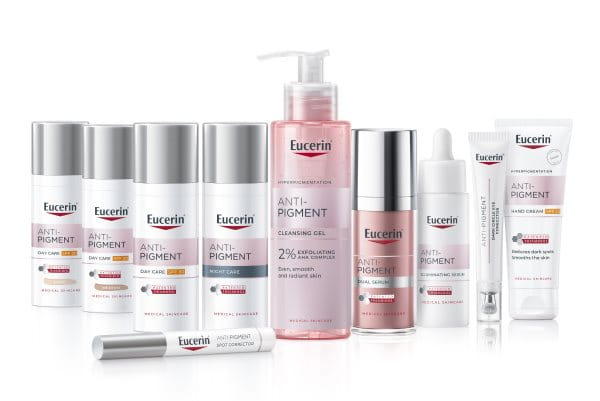
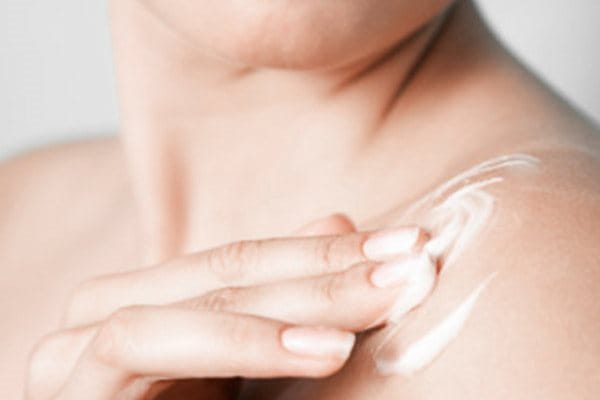
The Eucerin Anti-Pigment range has been specially formulated to reduce hyperpigmentation for more even and radiant skin. All four products in the range – a day cream, night cream, serum and spot corrector – contain Thiamidol, an effective and patented ingredient that acts at the root cause of hyperpigmentation by reducing melanin production. It has been clinically and dermatologically proven to reduce dark spots and prevent their re-appearance. First results are visible after two weeks and improve continuously with regular use.
Furthermore, with SPF 30 and UVA filters, Eucerin Anti-Pigment Day and Eucerin Anti-Pigment Day SPF30 Tinted in Light and Medium offer effective protection from the sun and prevent the formation of additional sun-induced pigment spots. The Dual Serum has a proven efficacy as it combines active ingredients Thiamidol and Hyaluronic Acid to prevent and reduce pigment spots. The formula still has the same proven efficacy as it combines active ingredients Thiamidol and Hyaluronic Acid to prevent and reduce pigment spots. For those seeking more radiance, the Skin Perfecting Serum also contains Thiamidol to reduce pigmentation while ultimately helping you to boost your natural glow and achieve more even skin.
Whilst Thiamidol is Eucerin-patented, there are other actives commonly used to treat hyperpigmentation – though with varying efficacy. These include: Arbutin, Azelaic Acid, Kojic Acid, other Resorcinol derivatives such as B-Resorcinol and Vitamin C and its derivatives.
A dermo-cosmetic solution is non-invasive and can be used year-round, as part of your daily skincare routine, to reduce hyperpigmentation. It can also be used to extend the results of a dermatological treatment.
Hyperpigmentation removal: dermatological treatments
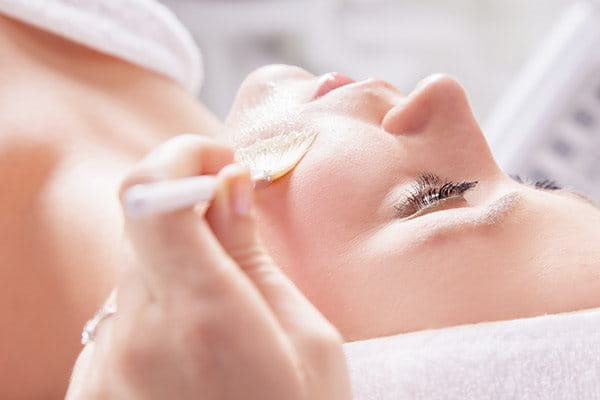
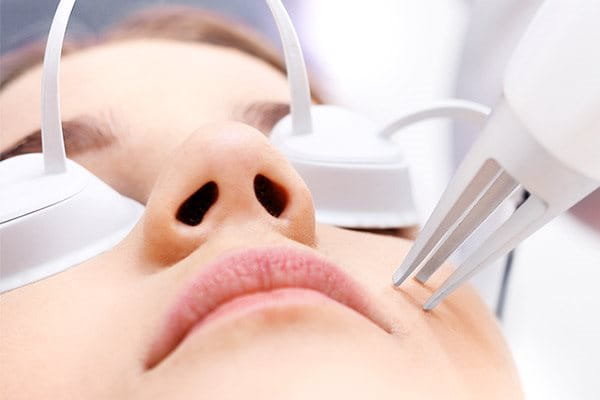
Dermatological treatments such as chemical peels and laser therapy can help to reduce hyperpigmentation:
- Chemical peels involve applying a chemical solution to the face, neck and hands to exfoliate skin (remove dead skin cells), stimulate the growth of new skin cells and reveal new skin. Read more about chemical peels in What are chemical peels and how do they work?
- Laser therapies have much the same effect, but tend to be more precise, as the dermatologist has more control over the intensity of the treatment. They involve ‘zapping’ the affected areas with high-energy light. The mildest treatments work just on the skin’s epidermis (surface layer), while more intense treatments can penetrate the deepest layers of the skin. Find out more in Laser therapy: how should I care for my skin after treatment?
Dermatologists may also prescribe and/or use hydroquinone which is still regarded as the most effective topical agent for reducing hyperpigmentation. It can, however, only be used for limited periods of time because, like other forms of chemical peel and laser treatment, it can irritate skin and actually cause post-inflammatory hyperpigmentation, especially in people with phototype 3 – 6 (Please refer to Fitzpatrick phototyping scale).
Our brand values

We deliver a holistic dermo-cosmetic approach to protect your skin, keep it healthy and radiant.

For over 100 years, we have dedicated ourselves to researching and innovating in the field of skin science. We believe in creating active ingredients and soothing formulas with high tolerability that work to help you live your life better each day.

We work together with leading dermatologist and pharmacist partners around the world to create innovative and effective skincare products they can trust and recommend.


